- 20 April 2016
- Imagination Technologies
There are many phrases and concepts that have entered our subconscious via pop culture. One of my all-time favorites has to be the idea of knowns and unknowns commonly used inside NASA to outline the degree of uncertainty in safety-critical missions.
Known unknowns result from phenomena which are recognized, but poorly understood. On the other hand, unknown unknowns are phenomena which cannot be expected because there has been no prior experience or theoretical basis for expecting the phenomena. – Statement of Evidence of E. D’Appolonia, D’Appolonia Consulting Engineers, Pittsburgh, Pennsylvania.
Mostly used only inside academic and engineering circles, the phrase exploded in popularity after former US Secretary of Defense Donald Rumsfeld used it in a briefing with news editors in 2002. Rumsfeld pointed out that the unknown unknowns – the things we don’t know we don’t know are the things that […] tend to be the difficult ones.
Today I’d like to add a twist to the theory of knowns and unknowns, using it to explain the potential virtual reality has to redefine mobile computing and user experiences.
The known knowns
Let’s start with what we know.
In an article posted on the Oculus blog, the company provided a list of minimum hardware specifications required for a quality desktop VR experience on Rift, the company’s first generation VR headset. According to Ars Technica, the total price for the listed CPU, GPUs and memory adds up to over $600.
This price point poses a real challenge for many of the companies betting big on mainstream VR. Some argue the PC market is currently on the cusp of a major renewal cycle; some analysts have estimated that there are about a billion personal computers due for a refresh in the next 12-18 months. However, the desktop and (to a larger extent) console market has been stagnant for years – and will likely remain that way for the foreseeable future.
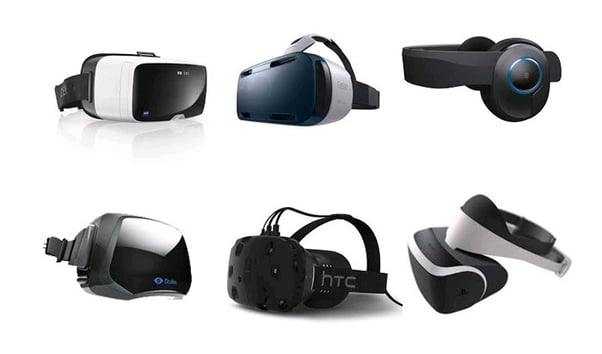 A selection of the many consumer VR headsets available today
A selection of the many consumer VR headsets available today
Mobile is the only computing market that is currently experiencing growth based on a predictable refresh cycle and the emergence of strong developing economies. Indeed, many consumers view the smartphone as the primary device for interacting on social media, watching videos, listening to music, checking email, and browsing the web.
Therefore, if virtual reality wants to become the next big thing in mainstream computing, it has to make it into mobile.
This presents another significant challenge. Even though current high-end mobile chips sport impressive specs, they are nowhere close in raw performance to the desktop parts needed by VR headsets.
In a detailed breakdown of the recommended specs, Oculus chief architect Atman Binstock says that the eye target scale for Rift scenes presently sits at the 400 million shaded pixels per second mark which represents approximately 3x the GPU power of 1080p rendering at 60 frames per second on a normal PC screen. This means that almost no current laptops have the GPU performance for the recommended spec – this is to be expected given the requirements presented above.
Here is where things get interesting though. Binstock concludes that upcoming mobile GPUs may be able to support this level of performance.
How can a mobile GPU beat a laptop part in performance? I hear you ask.
This takes us into the next section of this article.
The unknown knowns
The advancement of computing has always relied on companies continually pushing the boundaries of what is possible.
Once in a generation though, we get to experience something revolutionary, disruptive – the big game-changer. This is usually a technology that flies under the radar for a few years until it appears out of nowhere in the public eye, making an everlasting impact.
We saw it in the early 1990s when the first generation of 3D graphics chips brought professional-grade image quality to game consoles and PCs. And we saw it again in the late 2000s when GPUs were integrated in mobile chips.
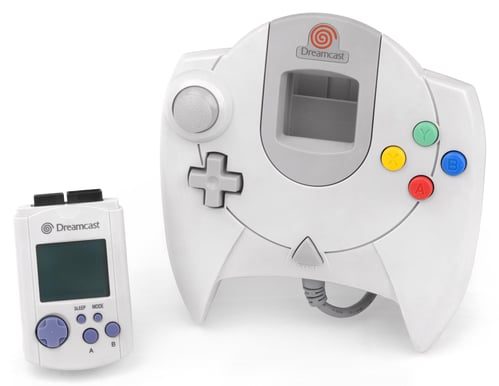 The SEGA Dreamcast console featured a PowerVR Series2 GPU
The SEGA Dreamcast console featured a PowerVR Series2 GPU
PowerVR was there each time, playing a pivotal role:
- Series2 GPUs enabled the SEGA Dreamcast consoles to leapfrog contemporary PC graphics cards, offering superior image quality and performance at a lower price point.
- The Series4 family achieved great success in the mobile and embedded graphics market, being licensed by seven of the top ten semiconductor manufacturers of the day.
In fact, PowerVR MBX and SGX GPUs single-handedly kickstarted the smartphone revolution, opening the door for complex UIs, modern operating systems and 3D applications to become a staple of the mobile experience.
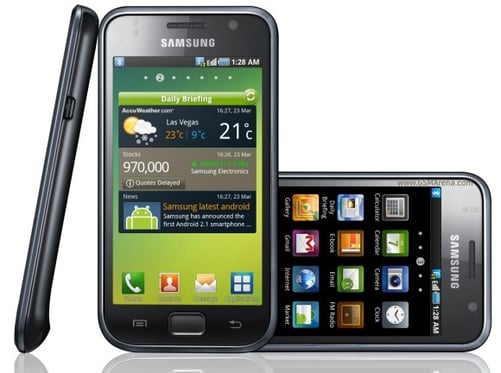 The Samsung Galaxy S smartphone integrated a PowerVR Series5 GPU
The Samsung Galaxy S smartphone integrated a PowerVR Series5 GPU
Virtual reality needs a similar revolution – and it is clear from the facts presented above that the traditional GPUs of today can’t scale to provide a solution. The truth is that current high-performance graphics technologies were simply not designed for mobility.
VR needs a true catalyst to break into mobile, a hero technology that can blur the boundary between the virtual and the real.
This is where our PowerVR Wizard real-time ray tracing GPU steps in – the unknown known. Its inner workings are largely unknown to the consumer at large. However, many high-profile developers know of its existence and eagerly await its arrival.
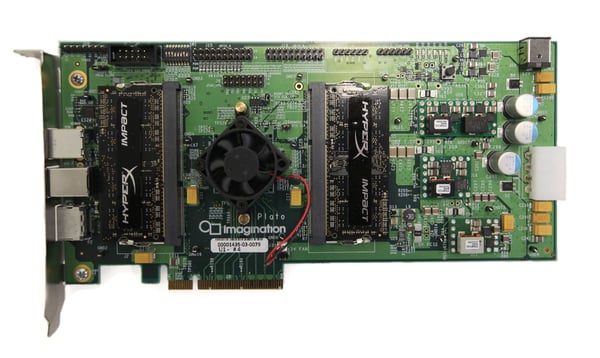 An evaluation board for the PowerVR GR6500 ray tracing GPU
An evaluation board for the PowerVR GR6500 ray tracing GPU
PowerVR Wizard is the game changer that everyone in the gaming and VR industries has been waiting for.
Here is why. PowerVR Wizard is the only high-performance GPU technology available today that unifies the mobile, console and desktop experience. Because the underlying architecture is so scalable, Wizard provides the same photorealistic image quality available in professional-grade hardware but at a fraction of the power budget.
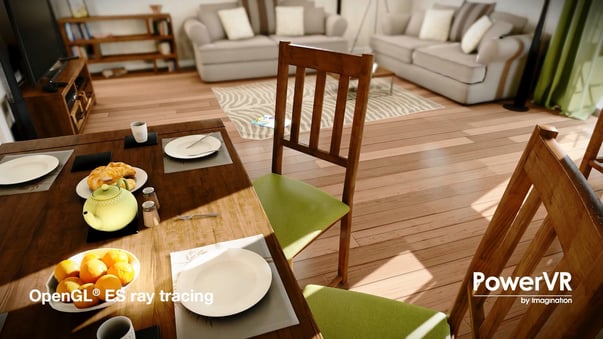 A screenshot from the Apartment demo rendered on a PowerVR Wizard GPU
A screenshot from the Apartment demo rendered on a PowerVR Wizard GPU
Sure, we’ve all seen the experimental headsets that use embedded smartphones as the main rendering engine; they have provided a reasonable experience that acts as a preview of what’s to come.
Wizard-based devices will take the VR user experience to a whole new level. Essentially, consumers are getting the same beautifully rendered images and effects seen in a movie like Avatar from a device that fits in a small bag or a large pocket. And because everything is rendered in real time, these worlds will be fully interactive, giving users the ability to modify them on the fly. When on the go, consumers can use a Wizard-based mobile device; from that, they can then seamlessly plug into a desktop PC and continue using the headset there with no performance or image quality impact. In addition, the mobile device can also act as an entry portal into the virtual world, while the desktop takes over when more complex use cases are required.
The unknown unknowns
Any new technology poses unknowns, or uncertainties, which may only become known after mass adoption.
We know VR will make an immediate impact in gaming and entertainment. Beyond that, future use cases for this technology remain wide open.
In an interview with Vanity Fair, Mark Zuckerberg predicts the future of VR relies on a unified sensory experience based on advanced human-machine interfaces:
Eventually I think we’re going to have technology where we can communicate our full sensory experience and emotions to someone through thought. There’s a lot of interesting research into that, where people have some band on their head…. You can look into it if you’re interested. – Mark Zuckerberg
While studying for my MSc. in VR at Sant’Anna School of Advanced Studies, I had the opportunity to study some of the applications of HMIs at the PERCRO lab in Pisa. The research projects spanned from Iron Man-like outfits to 3D caves that replicated real-world environments, relying on the kind of non-invasive sensory data that Zuckerberg mentions in his interview.
In conclusion
I’m personally very excited by the future of VR and how it will impact society during the next decade. Will everyone be walking around with portable VR headsets? Will they become the one personal device consumers will ever need – replacing all smartphones, tablets, laptops and PCs? Or will some other computing paradigm appear out of nowhere and shock the industry?
The truth is our industry can be unpredictable. However, a quick survey of the companies investing in VR shows it might possibly be the next step in the evolution of computing. As Rumsfeld pointed out, the unknown unknowns tend to be the difficult ones, but it’s exciting to see to see the wave of innovation, creativity and excitement expressed by developers and consumers alike as this technology emerges into known territory.






